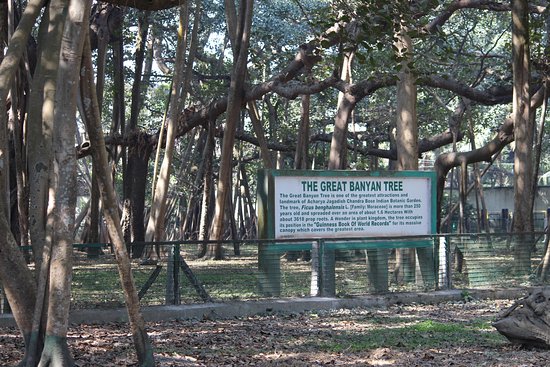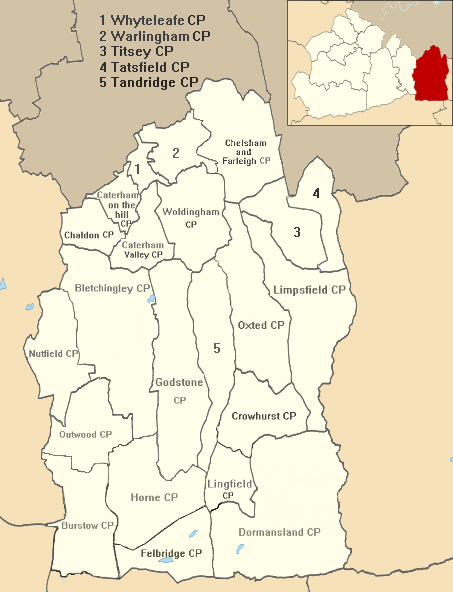|
David Prain
Sir David Prain (11 July 1857 – 16 March 1944) was a Scottish botanist who worked in India at the Calcutta Botanical Garden and went on to become Director of the Royal Botanic Gardens, Kew. Life Born to David Prain, a saddler, and his wife Mary Thomson, in Fettercairn, Scotland, in 1857, Prain attended the Fettercairn Parish School and then Aberdeen Grammar School. He then studied medicine at the University of Aberdeen, where he gained his M.A. in 1878. After teaching for two years at Ramsgate College, he returned to Aberdeen and thence to the University of Edinburgh, earning an MB ChM in 1883 with highest honours. He was demonstrator of anatomy at the College of Surgeons of Edinburgh in 1882 and 1883, and at the University of Aberdeen in 1883 and 1884. In 1884 Prain was recommended to Sir George King (1840–1909), home on leave from his position as director of the Royal Botanic Garden at Calcutta and looking for a medical student with botanical interests to enter the Ind ... [...More Info...] [...Related Items...] OR: [Wikipedia] [Google] [Baidu] |
Botanical Survey Of India
Botanical Survey of India (BSI) located in Kolkata, West Bengal, India. It was founded on 13 February 1890, is Government of India Ministry of Environment, Forest and Climate Change's organization for survey, research and conservation of plant wealth of India, flora and endangered species of India, including by collecting and maintaining germplasm and gene bank of endangered, patent and vulnerable plant species. History BSI was formally instituted by East India Company (EIC) on 13 February 1890Botanical Survey of India (BSI) "History", Botanical Survey of India. under the direction of Sir who became first ex-officio director, earlier he had bee ... [...More Info...] [...Related Items...] OR: [Wikipedia] [Google] [Baidu] |
Uppsala
Uppsala (, or all ending in , ; archaically spelled ''Upsala'') is the county seat of Uppsala County and the List of urban areas in Sweden by population, fourth-largest city in Sweden, after Stockholm, Gothenburg, and Malmö. It had 177,074 inhabitants in 2019. Located north of the capital Stockholm it is also the seat of Uppsala Municipality. Since 1164, Uppsala has been the ecclesiology, ecclesiastical centre of Sweden, being the seat of the Archbishop of Uppsala, Archbishop of the Church of Sweden. Uppsala is home to Scandinavia's largest cathedral – Uppsala Cathedral, which was the frequent site of the coronation of the Swedish monarch until the late 19th century. Uppsala Castle, built by King Gustav I of Sweden, Gustav Vasa, served as one of the royal residences of the Swedish monarchs, and was expanded several times over its history, making Uppsala the secondary capital of Sweden during its Swedish Empire, greatest extent. Today it serves as the residence of the Gover ... [...More Info...] [...Related Items...] OR: [Wikipedia] [Google] [Baidu] |
Anniversary
An anniversary is the date on which an event took place or an institution was founded in a previous year, and may also refer to the commemoration or celebration of that event. The word was first used for Catholic feasts to commemorate saints. Most countries celebrate national anniversaries, typically called national days. These could be the date of independence of the nation or the adoption of a new constitution or form of government. There is no definite method for determining the date of establishment of an institution, and it is generally decided within the institution by convention. The important dates in a sitting monarch's reign may also be commemorated, an event often referred to as a "jubilee". Names * Birthdays are the most common type of anniversary, on which someone's birthdate is commemorated each year. The actual celebration is sometimes moved for practical reasons, as in the case of an official birthday or one falling on February 29. * Wedding anniversaries ... [...More Info...] [...Related Items...] OR: [Wikipedia] [Google] [Baidu] |
Honorary Degree
An honorary degree is an academic degree for which a university (or other degree-awarding institution) has waived all of the usual requirements. It is also known by the Latin phrases ''honoris causa'' ("for the sake of the honour") or ''ad honorem '' ("to the honour"). The degree is typically a doctorate or, less commonly, a master's degree, and may be awarded to someone who has no prior connection with the academic institution or no previous postsecondary education. An example of identifying a recipient of this award is as follows: Doctorate in Business Administration (''Hon. Causa''). The degree is often conferred as a way of honouring a distinguished visitor's contributions to a specific field or to society in general. It is sometimes recommended that such degrees be listed in one's curriculum vitae (CV) as an award, and not in the education section. With regard to the use of this honorific, the policies of institutions of higher education generally ask that recipients ... [...More Info...] [...Related Items...] OR: [Wikipedia] [Google] [Baidu] |
Fellow Of The Royal Society
Fellowship of the Royal Society (FRS, ForMemRS and HonFRS) is an award granted by the judges of the Royal Society of London to individuals who have made a "substantial contribution to the improvement of natural science, natural knowledge, including mathematics, engineering science, and medical science". Fellow, Fellowship of the Society, the oldest known scientific academy in continuous existence, is a significant honour. It has been awarded to many eminent scientists throughout history, including Isaac Newton (1672), Michael Faraday (1824), Charles Darwin (1839), Ernest Rutherford (1903), Srinivasa Ramanujan (1918), Albert Einstein (1921), Paul Dirac (1930), Winston Churchill (1941), Subrahmanyan Chandrasekhar (1944), Dorothy Hodgkin (1947), Alan Turing (1951), Lise Meitner (1955) and Francis Crick (1959). More recently, fellowship has been awarded to Stephen Hawking (1974), David Attenborough (1983), Tim Hunt (1991), Elizabeth Blackburn (1992), Tim Berners-Lee (2001), Venki R ... [...More Info...] [...Related Items...] OR: [Wikipedia] [Google] [Baidu] |
Surrey
Surrey () is a ceremonial and non-metropolitan county in South East England, bordering Greater London to the south west. Surrey has a large rural area, and several significant urban areas which form part of the Greater London Built-up Area. With a population of approximately 1.2 million people, Surrey is the 12th-most populous county in England. The most populated town in Surrey is Woking, followed by Guildford. The county is divided into eleven districts with borough status. Between 1893 and 2020, Surrey County Council was headquartered at County Hall, Kingston-upon-Thames (now part of Greater London) but is now based at Woodhatch Place, Reigate. In the 20th century several alterations were made to Surrey's borders, with territory ceded to Greater London upon its creation and some gained from the abolition of Middlesex. Surrey is bordered by Greater London to the north east, Kent to the east, Berkshire to the north west, West Sussex to the south, East Sussex to ... [...More Info...] [...Related Items...] OR: [Wikipedia] [Google] [Baidu] |
Whyteleafe
Whyteleafe is a village in the district of Tandridge, Surrey, England, with a few streets falling inside the London Borough of Croydon. The village, in a dry valley of the North Downs, has three railway stations (on two parallel lines). Neighbouring villages and towns include Woldingham, Caterham, Coulsdon, Warlingham, and Kenley. To the west are Kenley Aerodrome, Kenley Common (owned by the Corporation), Coxes Wood, and Blize Wood. To the east are Riddlesdown, the Dobbin and Marden Park. The churchyard contains graves of airmen who died during WWII, stationed at RAF Kenley nearby. The village forms part of the Greater London Built-up Area. History The village name comes from the distinctive white underside of the whitebeam trees growing in the area. In 1855 Nathaniel Glover purchased White Leaf field and George Henry Drew later completed the building that was called "White Leafe House". By 1881 the surrounding area had become known as "Whiteleafe". As with Kenley the history ... [...More Info...] [...Related Items...] OR: [Wikipedia] [Google] [Baidu] |
William Purdom
William Purdom (10 April 1880 – 7 November 1921) was a British plant explorer. After being apprenticed as a gardener aBrathay Hallin the English Lake district, he traveled to London to work at the Hugh Low, Enfield Nursery, then onto the Veitch establishment at Coombe Wood. In 1902, Purdom took up a position as a gardener at Kew Botanic Garden soon becoming promoted to a sub-foreman (leading-hand) position. Purdom became heavily involved with early Union activities particularly promoting the rights of junior workers which eventually led to his unjustified dismissal. Despite being a bane to the, then, Kew Director, David Prain, the latter recognized the talents of William Purdom and recommended his employee as being very suitable as a plant collector for a joint venture by Veitch and the Arnold Arboretum of Harvard University to the northern provinces of China in 1909. Purdom collected and photographed plants for the Arboretum, as well as the great British Nursery firm for three y ... [...More Info...] [...Related Items...] OR: [Wikipedia] [Google] [Baidu] |
George V
George V (George Frederick Ernest Albert; 3 June 1865 – 20 January 1936) was King of the United Kingdom and the British Dominions, and Emperor of India, from 6 May 1910 until Death and state funeral of George V, his death in 1936. Born during the reign of his grandmother Queen Victoria, George was the second son of Edward VII, Albert Edward, Prince of Wales, and was third in the line of succession to the British throne behind his father and his elder brother, Prince Albert Victor. From 1877 to 1892, George served in the Royal Navy, until the unexpected death of his elder brother in early 1892 put him directly in line for the throne. On Victoria's death in 1901, George's father ascended the throne as Edward VII, and George was created Prince of Wales. He became King-Emperor, king-emperor on his father's death in 1910. George's reign saw the rise of socialism, communism, fascism, Irish republicanism, and the Indian independence movement, all of which radically changed the poli ... [...More Info...] [...Related Items...] OR: [Wikipedia] [Google] [Baidu] |
Edward VII
Edward VII (Albert Edward; 9 November 1841 – 6 May 1910) was King of the United Kingdom of Great Britain and Ireland and Emperor of India, from 22 January 1901 until his death in 1910. The second child and eldest son of Queen Victoria and Prince Albert of Saxe-Coburg and Gotha, and nicknamed "Bertie", Edward was related to royalty throughout Europe. He was Prince of Wales and heir apparent to the British throne for almost 60 years. During the long reign of his mother, he was largely excluded from political influence and came to personify the fashionable, leisured elite. He travelled throughout Britain performing ceremonial public duties and represented Britain on visits abroad. His tours of North America in 1860 and of the Indian subcontinent in 1875 proved popular successes, but despite public approval, his reputation as a playboy prince soured his relationship with his mother. As king, Edward played a role in the modernisation of the British Home Fleet and the reorganis ... [...More Info...] [...Related Items...] OR: [Wikipedia] [Google] [Baidu] |
1906 Birthday Honours
The 1906 Birthday Honours for the British Empire were announced on 29 June, to celebrate the birthday of Edward VII on 9 November. The recipients of honours are displayed here as they were styled before their new honour, and arranged by honour, with classes (Knight, Knight Grand Cross, ''etc.'') and then divisions (Military, Civil, ''etc.'') as appropriate. The Most Honourable Order of the Bath Knight Grand Cross of the Order of the Bath (GCB) ;Military Division *Admiral Sir Harry Holdsworth Rawson, K.C.B. *Lieutenant-General Sir William Francis Butler, K.C.B. *Lieutenant-General Sir John Withers McQueen, K.C.B., Indian Army. *Lieutenant-General and Honorary General Sir Julius Augustus Robert Raines, K.C.B., Colonel, The Buffs (East Kent Regiment). ;Civil Division *His Excellency General Porfirio Díaz, President of the United States of Mexico. (Honorary) * Thomas, Baron Brassey, K.C.B. *Sir Kenelm Edward Digby, K.C.B. *Sir Edward Walter Hamilton, K.C.B. Knight Commander of ... [...More Info...] [...Related Items...] OR: [Wikipedia] [Google] [Baidu] |







.jpg)